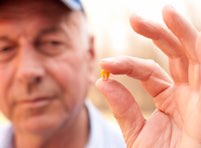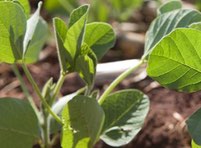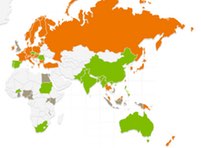GMO Basics
What are GMOs? How are they made? Why do farmers use them? This section will help you understand the basics.
What are GMOs?
 Biotechnology in plant agriculture has come to mean the process of intentionally making a copy of a gene for a desired trait from one plant or organism and using it in another plant. The result is a GMO (genetically modified organism).
Biotechnology in plant agriculture has come to mean the process of intentionally making a copy of a gene for a desired trait from one plant or organism and using it in another plant. The result is a GMO (genetically modified organism).
What's in a name?
 GMO, genetic modification, biotechnology, biotech seeds, genetic engineering...
GMO, genetic modification, biotechnology, biotech seeds, genetic engineering...
Genetically modified organism (GMO) is commonly used to describe any of the terms above, but actually means that a change has been made to the DNA of an organism.
Why do farmers use GMOs?
 Farmers choose seeds based on what is best for their farms, market demand and local growing environments. Farmers select GMOs to reduce yield loss or crop damage from weeds, diseases, and insects, as well as from extreme weather conditions, such as drought. Farmers choose to use GMOs to reduce the impact of agriculture on their environment and their costs — by applying pesticides in more targeted ways, for example. Farmers have also used GMOs to save a crop — such as papaya from Hawaii — that was being threatened by a disease.
Farmers choose seeds based on what is best for their farms, market demand and local growing environments. Farmers select GMOs to reduce yield loss or crop damage from weeds, diseases, and insects, as well as from extreme weather conditions, such as drought. Farmers choose to use GMOs to reduce the impact of agriculture on their environment and their costs — by applying pesticides in more targeted ways, for example. Farmers have also used GMOs to save a crop — such as papaya from Hawaii — that was being threatened by a disease.
Where are GM crops grown in the world?
 Farmers around the world have chosen to use GMOs because of the benefits to their businesses and their local communities. As of 2014, GMOs are grown, imported and/or used in 70 countries.
Farmers around the world have chosen to use GMOs because of the benefits to their businesses and their local communities. As of 2014, GMOs are grown, imported and/or used in 70 countries.